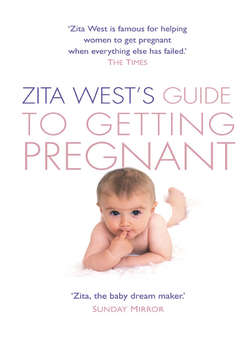Читать книгу Zita West’s Guide to Getting Pregnant - Zita WEST, Zita West - Страница 27
The Menstrual Cycle
ОглавлениеMost of us have learned to live with certain symptoms in our cycle, but it’s also important to remember that our fertility cycle is controlled by the pituitary gland, located deep within the brain and influenced by all activity there. Hormones, which are chemical messengers, are primarily controlled by the brain’s activity – it’s like a constant conversation that occurs between the hormones of the brain and the ovaries, sending messages back and forth (see page 8).
The pituitary gland is often referred to as the ‘master gland’ of the body, because it secretes at least nine major hormones designed to stimulate the ovaries, adrenals and thyroid, amongst others (including the testes in men), which all have a role to play in fertility. When we are producing the right amount and blend of hormones, we feel fine. When there is an imbalance, these chemical messengers can make us feel pretty lousy. We talk about having ‘hormones from hell’ when we, as women, feel imbalanced at certain times of the month. PMS is a clear indicator that hormones are out of balance. The hormones are doing their job, and the body is reacting as it should, but because the balance is out, then the effects are negative.
Each of the fertility signals that you observe when you begin to chart your own fertility corresponds to a hormonal process and the presence of hormones in your bloodstream. The hormones oestrogen and progesterone are particularly important, and both affect the body in a number of ways that are easy to note.
The menstrual cycle is a constantly changing hormonal environment, but oestrogen influences the first part of the cycle – up to ovulation – and then progesterone exerts its influence. Some women would probably prefer not to be so influenced by the ups and downs that a cycle brings, but these changing hormonal events will help you to know when your chances of conceiving are best.
Few women have a 28-day cycle, but we can say that the average length is around 28 days. For some women their normal cycle can be short (around 25 days) or long (around 35 days). Provided there is a regular pattern, this is normal for you, and you can be relatively sure that ovulation is occurring. It is when cycle length fluctuates from 25 days one month to 30 another, or 42 another, that ovulation is likely to be haphazard, or even non – existent during some cycles.
The fertility, or menstrual, cycle starts on the first day of menstruation or a ‘period’. Sometimes on medical forms women are asked to give the date of their ‘last menstrual period’ or ‘LMP’ – this would be the date on which you started to bleed.
Oestrogens are the dominant hormones during the first part of the cycle – the time before ovulation, also known as the follicular phase (see page 8) – while progesterone takes over during what is known as the luteal phase (see page 31) and also during pregnancy, should conception occur. Your cervical secretions are linked to oestrogen secretion, and can give a good indication of the availability of oestrogen.
Menstruation, or a ‘period’, is the bleeding with which every woman is familiar. It heralds the end of one cycle and the beginning of another. The hormones responsible for the activity of ovulation and womb – preparation effectively ‘take a break’ at this stage, in order to activate the next cycle. Many women are quite susceptible to the effects of this hormonal switch.
Women often ask me what’s ‘normal’ for a period: how long it should last and how much blood should be lost. The average period lasts for between 3 and 5 days, and the total blood loss is between 30 and 80 ml (6 to 16 teaspoons). However, this is only the average; each woman’s experience of her period will be unique to her. Some women seem to have a lot of abdominal cramping (caused by contractions in the womb) when they have a period, or back pain, while others have none. For some, the bleeding happens in a flood at the beginning, while for others it’s a slow, continuous bleed.
